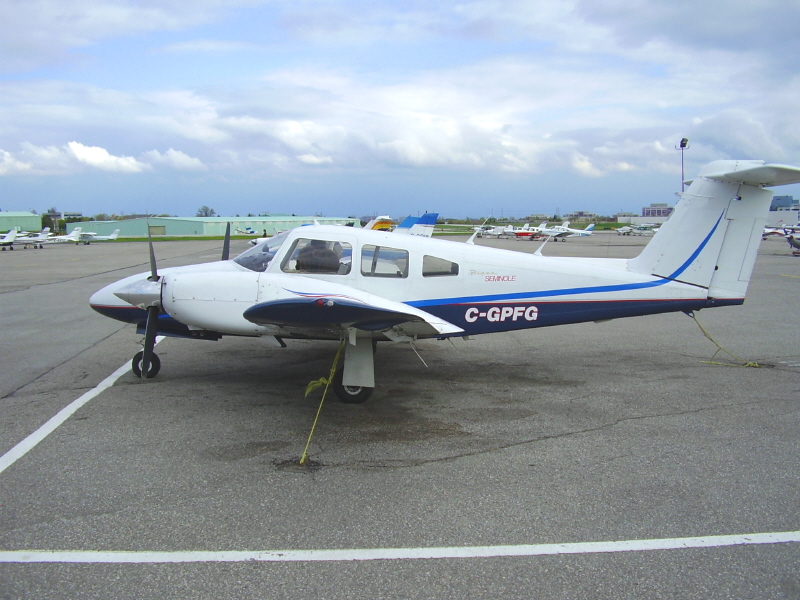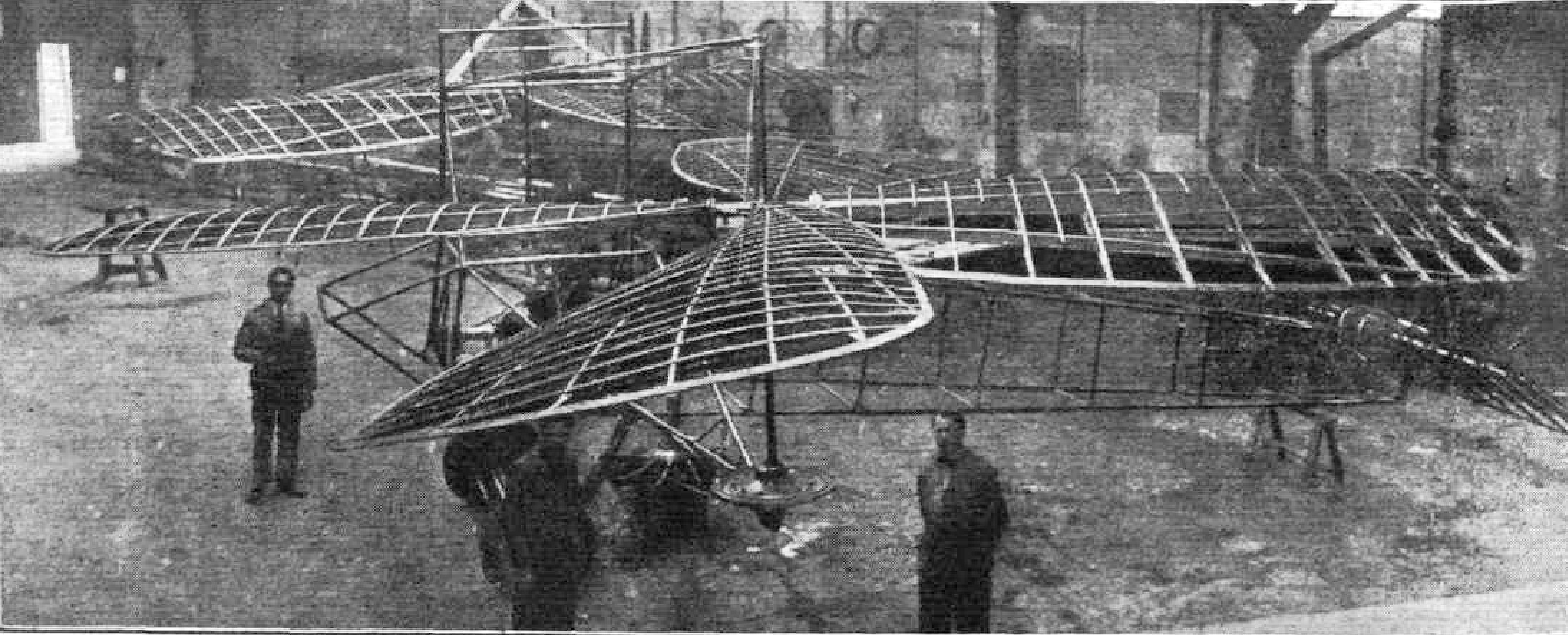|
CSIR Experimental Autogyro II
__NOTOC__ The CSIR SARA II (SARA - South African Research Autogyro) is a South African two-seat experimental autogyro designed and built by the Aeronautics Research Unit of the Council for Scientific and Industrial Research. Development As part of the support to South African aircraft manufacturing industry the ARU developed a single-seat autogyro as a research vehicle. Design of the autogyro was started in 1965 and construction followed in April 1967, by 1972 the autogyro, registered ZS-UGL, was ready for tethered tests mounted on a lorry-platform, it made its first free flight on 30 November 1972 at Swartkop Air Force Base. Following the test flights the autogyro was modified. Design The autogyro had a box-like fuselage structure made from light-alloy and was fitted with twin fins and rudders with a fixed incidence tail-plane mounted between them. It was fitted with a two-bladed teetering rotor, the rotor could be spun up using a shaft drive through a clutch from the engine. The ... [...More Info...] [...Related Items...] OR: [Wikipedia] [Google] [Baidu] |
Experimental Aircraft
An experimental aircraft is an aircraft intended for testing new aerospace technologies and design concepts. The term ''research aircraft'' or '' testbed aircraft'', by contrast, generally denotes aircraft modified to perform scientific studies, such as weather research or geophysical surveying, similar to a research vessel. United States The term "experimental aircraft" also has specific legal meaning in Australia, the United States and some other countries; usually used to refer to aircraft flown with an experimental certificate. In the United States, this also includes most homebuilt aircraft Homebuilt aircraft, also known as amateur-built aircraft or kit planes, are constructed by persons for whom this is not a professional activity. These aircraft may be constructed from "scratch", from plans, or from assembly kits.Armstrong, Kenn ..., many of which are based on conventional designs and hence are experimental only in name because of certain restrictions in operation. [...More Info...] [...Related Items...] OR: [Wikipedia] [Google] [Baidu] |
Autogyro
An autogyro (from Greek and , "self-turning"), also known as a ''gyroplane'', is a type of rotorcraft that uses an unpowered rotor in free autorotation to develop lift. Forward thrust is provided independently, by an engine-driven propeller. While similar to a helicopter rotor in appearance, the autogyro's rotor must have air flowing across the rotor disc to generate rotation, and the air flows upwards through the rotor disc rather than down. The autogyro was invented by Spanish engineer Juan de la Cierva in an attempt to create an aircraft that could fly safely at low speeds. He first flew one on 9 January 1923, at Cuatro Vientos Airfield in Madrid. The aircraft resembled the fixed-wing aircraft of the day, with a front-mounted engine and propeller. Cierva's autogyro is considered the predecessor of the modern helicopter. The success of the autogyro garnered the interest of industrialists and under license from Cierva in the 1920s and 1930s, the Pitcairn & Kellett co ... [...More Info...] [...Related Items...] OR: [Wikipedia] [Google] [Baidu] |
Council For Scientific And Industrial Research
The Council for Scientific and Industrial Research (CSIR) is South Africa's central and premier scientific research and development organisation. It was established by an act of parliament in 1945 and is situated on its own campus in the city of Pretoria. It is the largest research and development (R&D) organisation in Africa and accounts for about 10% of the entire African R&D budget. It has a staff of approximately 3,000 technical and scientific researchers, often working in multi-disciplinary teams. CSIR contract research and development Overview The CSIR contract R&D portfolio aims to enable clear understanding of national imperatives and the needs of industry to optimise the impact of the CSIR's R&D outputs. It leverages public, private and international partnerships in support of cutting-edge science, engineering and technology (SET).The organisation has clients in both the private sector (micro, small, medium and large enterprises; formal and informal), as well as in ... [...More Info...] [...Related Items...] OR: [Wikipedia] [Google] [Baidu] |
AFB Swartkop
Air Force Base Swartkop is South Africa's oldest air force base and houses the South African Air Force Museum. It is managed as part of AFB Waterkloof and houses one of the three branches of the South African Air Force Museum. The name of the air force base, ''Swartkop'' means ''Black hill'' in Afrikaans. AFB Swartkop is located in the town Centurion (previously Verwoerdburg) in the Gauteng Province of South Africa, between Pretoria and Midrand (Johannesburg), which is a part of the City of Tshwane Metropolitan Municipality. History Air Force Station (AFS) Zwartkop was established in April 1921 after a private farm named Zwartkop was acquired by the Government in 1920. The Dutch spelling of Zwartkop was retained for the Air Force Station that was subsequently established there. On 1 April 1949, the Dutch spelling was dropped in favour of the Afrikaans spelling and resulted in Air Force Station Swartkop. The Air Force Station was upgraded to an Air Force Base on 1 February ... [...More Info...] [...Related Items...] OR: [Wikipedia] [Google] [Baidu] |
Continental O-360
The Continental IO-360 is a family of fuel-injected air-cooled, horizontally opposed six-cylinder aircraft engines manufactured by Continental Motors in the United States of America, now part of AVIC International since 2010. The engine is available in both naturally aspirated, fuel injected IO-360 models and turbocharged TSIO-360 versions. It is also available in both left and right hand rotation versions for use on twin-engined aircraft.Taylor 1976, pp. 792–793 There was no carbureted version of this engine, which would have been designation ''O-360'', therefore the base model is the ''IO-360''. History The IO-360 was first certified by the Federal Aviation Administration on 15 May 1962 to the CAR 13 certification standard, effective June 15, 1956, as amended by 13-1 thru 13–3. The engine is produced by Continental under Production Certificate No. 508. The turbocharged TSIO-360 series was first certified on 11 October 1966 to the Federal Aviation Regulations ... [...More Info...] [...Related Items...] OR: [Wikipedia] [Google] [Baidu] |
Fuselage
The fuselage (; from the French ''fuselé'' "spindle-shaped") is an aircraft's main body section. It holds crew, passengers, or cargo. In single-engine aircraft, it will usually contain an engine as well, although in some amphibious aircraft the single engine is mounted on a pylon attached to the fuselage, which in turn is used as a floating hull. The fuselage also serves to position the control and stabilization surfaces in specific relationships to lifting surfaces, which is required for aircraft stability and maneuverability. Types of structures Truss structure This type of structure is still in use in many lightweight aircraft using welded steel tube trusses. A box truss fuselage structure can also be built out of wood—often covered with plywood. Simple box structures may be rounded by the addition of supported lightweight stringers, allowing the fabric covering to form a more aerodynamic shape, or one more pleasing to the eye. Geodesic construction Ge ... [...More Info...] [...Related Items...] OR: [Wikipedia] [Google] [Baidu] |
Lycoming O-360-A
The Lycoming O-360 is a family of four-cylinder, direct-drive, horizontally opposed, air-cooled, piston aircraft engines. Engines in the O-360 series produce between 145 and 225 horsepower (109 to 168 kW), with the basic O-360 producing 180 horsepower. The engine family has been installed in thousands of aircraft, including the Cessna 172, Piper Cherokee/Archer, Grumman Tiger, and many home-built types. It has a factory rated time between overhaul (TBO) of 2000 hours or twelve years. O-360 family engines are also widely used in airboats, most notably in the Hurricane Aircats used by the US Army during the Vietnam War. The first O-360 certified was the A1A model, certified on 20 July 1955 to United States CAR 13 effective March 5, 1952 as amended by 13-1 and 13-2. The Lycoming IO-390 is an O-360 which has had its cylinder bore increased by , developing . Series The O-360 family of engines comprises 167 different models with 12 different prefixes. All have a displaceme ... [...More Info...] [...Related Items...] OR: [Wikipedia] [Google] [Baidu] |
NACA Airfoil
The NACA airfoils are airfoil shapes for aircraft wings developed by the National Advisory Committee for Aeronautics (NACA). The shape of the NACA airfoils is described using a series of digits following the word "NACA". The parameters in the numerical code can be entered into equations to precisely generate the cross-section of the airfoil and calculate its properties. Origins NACA initially developed the numbered airfoil system which was further refined by the United States Air Force at Langley Research Center. According to the NASA website: Four-digit series The NACA four-digit wing sections define the profile by: # First digit describing maximum camber as percentage of the chord. # Second digit describing the distance of maximum camber from the airfoil leading edge in tenths of the chord. # Last two digits describing maximum thickness of the airfoil as percent of the chord. For example, the NACA 2412 airfoil has a maximum camber of 2% located 40% (0.4 chords) from the l ... [...More Info...] [...Related Items...] OR: [Wikipedia] [Google] [Baidu] |
List Of Rotorcraft
This is a list of rotorcraft, including helicopters, autogyros, rotor kites and convertiplanes. A A-B Helicopters * A-B Helicopters A/W 95 American Aircraft International * AAI Penetrator Aero *Aero HC-2 Heli Baby Aero-Astra * Aero-Astra Okhotnik 1 Aero Eli Serviza *Aero Eli Serviza Yo-Yo 222 Aerokopter * Aerokopter AK1-3 Sanka Aerospace General * Aerospace General Mini-Copter Aérospatiale * Aérospatiale Alouette II *Aérospatiale Alouette III * Aérospatiale Cougar *Aérospatiale Dauphin * Aérospatiale Djinn * Aérospatiale Ecureuil * Aérospatiale Gazelle * Aérospatiale Lama * Aérospatiale Puma *Aérospatiale Super Frelon *Aérospatiale Super Puma Aerotécnica * Aerotécnica AC-11 * Aerotécnica AC-12 * Aerotécnica AC-14 Agusta * Agusta AZ.101G * Agusta AB.102 * Agusta A103 * Agusta A104 Helicar * Agusta A105 *Agusta A106 * Agusta A109 * Agusta A115 * Agusta A119 Koala *Agusta A129 Mangusta AgustaWestland * AgustaWestland AW10 ... [...More Info...] [...Related Items...] OR: [Wikipedia] [Google] [Baidu] |
1970s South African Experimental Aircraft
Year 197 ( CXCVII) was a common year starting on Saturday (link will display the full calendar) of the Julian calendar. At the time, it was known as the Year of the Consulship of Magius and Rufinus (or, less frequently, year 950 ''Ab urbe condita''). The denomination 197 for this year has been used since the early medieval period, when the Anno Domini calendar era became the prevalent method in Europe for naming years. Events By place Roman Empire * February 19 – Battle of Lugdunum: Emperor Septimius Severus defeats the self-proclaimed emperor Clodius Albinus at Lugdunum (modern Lyon). Albinus commits suicide; legionaries sack the town. * Septimius Severus returns to Rome and has about 30 of Albinus's supporters in the Senate executed. After his victory he declares himself the adopted son of the late Marcus Aurelius. * Septimius Severus forms new naval units, manning all the triremes in Italy with heavily armed troops for war in the East. His soldiers embark on ... [...More Info...] [...Related Items...] OR: [Wikipedia] [Google] [Baidu] |





